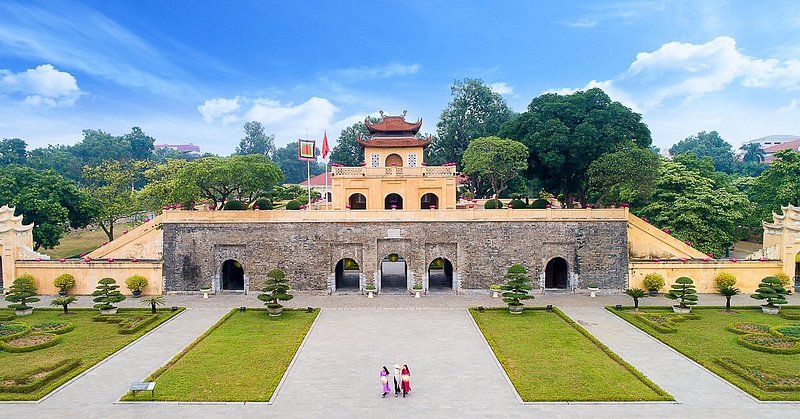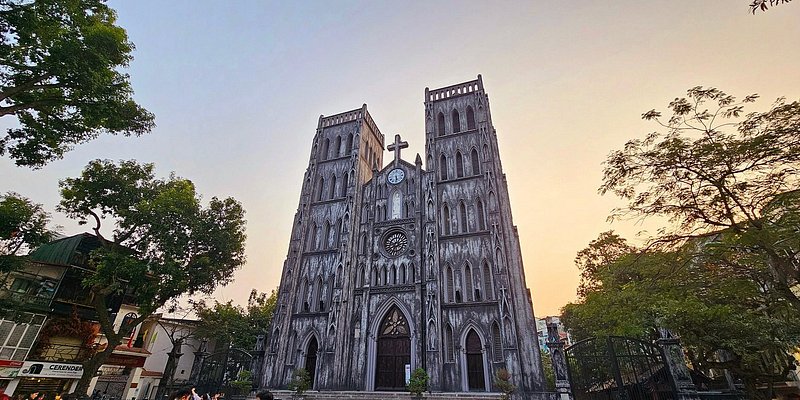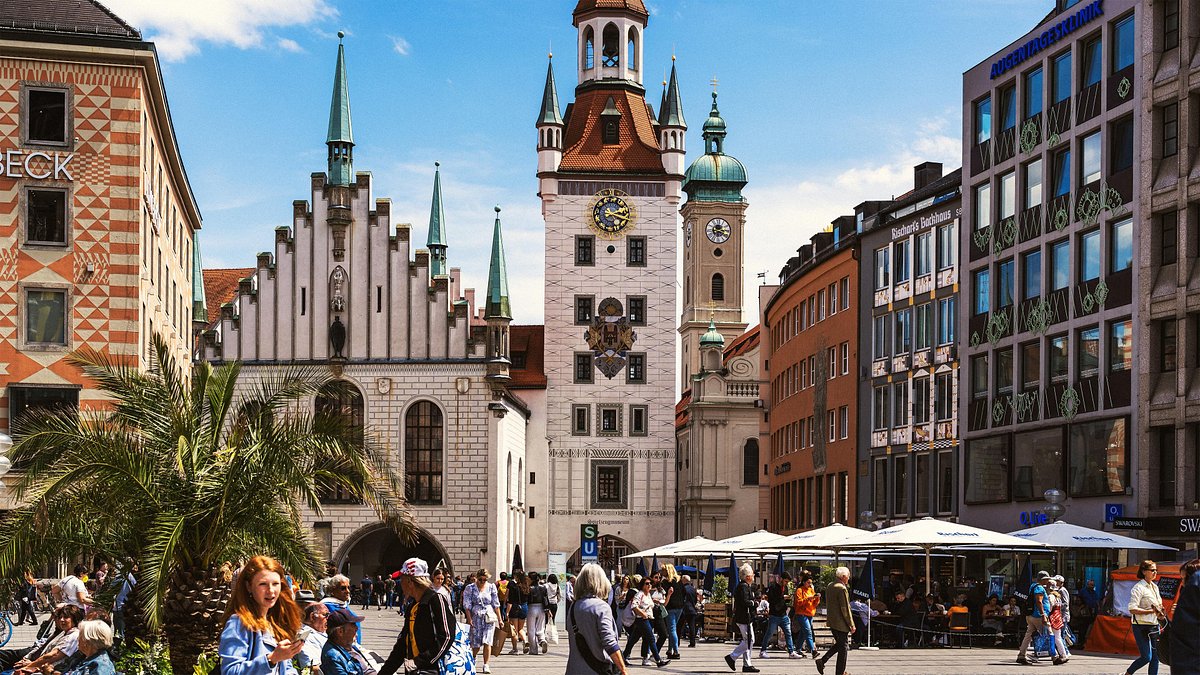Plus, the historic landmarks everyone should visit.
Hanoi is a perplexing and electrifying place—a city where sidewalk cafes wrap around temples and motorbikes roar past ancient watchtowers. For years, pundits have agonized that Vietnam’s ballooning economy will crush the capital’s distinct charms. And has it? Far from it.
I’ve been writing about Hanoi for more than a decade, and it continues to baffle me. How does this city modernize so rapidly while managing to keep its charisma and history intact? Whenever I explore an urban neighborhood elsewhere in Southeast Asia, I find myself muttering something like: “Yeah it’s nice, but it isn’t Hanoi.” I suppose that’s why I still call it home.
Yes, the city is always evolving, but Hanoi’s historic landmarks, temples, and pagodas anchor it. Before I dig into details about my favorites, there’s one thing every visitor should keep in mind: Hanoi is a welcoming city, but the weather is anything but kind. The summers are sticky and stifling, and the short, sharp winters can be surprisingly chilly. Added to the mix are buckets of rain, which can descend on the city any time of the year. Pack accordingly! Also, a note on terminology: Here I’ve followed Vietnamese convention and used “pagoda” (chùa) for religious buildings with a Buddhist connection and “temple” (đền) for those that are dedicated to gods and heroes.
Below are my picks for Hanoi’s must-see landmarks, temples, and pagodas, alongside tips on how to get the most out of each site—and the exhaustion level associated with each.
Ngọc Sơn Temple
If you love a good legend
Image: Management/Tripadvisor
Accessed by the crimson Thê Húc Bridge, this small temple complex is an homage to human excellence with shrines dedicated to a military strategist, a celebrated scholar, and a prodigious warrior. The temples sit on Hoàn Kiếm Lake (Lake of the Returned Sword), which gets its name from a 15th-century legend. The story goes that after lending Lord Lê Lợi a sword that he used to expel invaders, a turtle god appeared from the lake’s murky depths and demanded the blade’s return. If you look south from Ngọc Sơn Temple you’ll be able to make out the Turtle Tower, which is dedicated to the divinity.
Tip: Keep an eye out for the two stuffed turtles housed in glass cabinets. These bulky reptiles once resided in the lake and give credence to the legend of the returned sword. Both died of natural causes before being immortalized.
Imperial Citadel of Thăng Long
When you want to dig into Hanoi’s history

Image: Management/Tripadvisor
This colossal oblong citadel offers a crash course in Hanoi’s long and layered history, with feudal remnants, colonial buildings, wartime bunkers, and weekend cultural and music festivals. The most impressive monument is the Đoan Môn, a climbable two-story watchtower with commanding views, but I think the most intriguing site is the General Command Headquarters Bunker. This served as North Vietnam’s military command post during the American War, and still holds antique war equipment and maps.
Tip: Archeology enthusiasts should seek out the excavated site opposite the entrance to the citadel at 18 Hoàng Diệu Street. These dusty wall remnants predate the citadel, when the area was under Chinese control.
St Joseph’s Cathedral
When you’re desperate for a tea break

Of the (many) French buildings in Hanoi, I find this one to be the most atmospheric. Built in 1886, the neo-gothic cathedral contrasts with the ostentatious whimsy of many other colonial buildings in the city like the Opera House and Presidential Palace. Access the interiors by walking down the quiet road to the left of the cathedral and look for a small door on your right. If it’s closed, circle back later.
Tip: Forget the fancy cafes. One of my favorite Hanoi pastimes is sitting on a little plastic stool in a basic refreshment stall in front of the cathedral and sipping on an iced lemon tea (trà chanh đá).
Bạch Mã Temple
If you’re in need of refuge in the Old Quarter

Image: Dinh Trung-Tin/Tripadvisor
Bạch Mã Temple is one of four Hanoi sanctuaries that protects the city against malicious spiritual forces. (The other three are Kim Liên Temple, Voi Phục Temple, and Quán Thánh Temple.) This compact 11th-century temple—perhaps the oldest in the city—is dedicated to a heavenly horse that signaled where Lý Thái Tổ, Hanoi’s founder, should construct the city walls. You’ll spot a festooned horse statue at the central altar, as well as an ancient shrine dedicated to Confucius.
Tip: Bạch Mã Temple sits in the middle of the Old Quarter, a cluster of tangled trading streets north of Hoàn Kiếm Lake. This is the liveliest neighborhood in Hanoi and, in my opinion, the best place to stay.
Trần Quốc Pagoda
If you’re an amateur photog

Image: vinhdav/Getty Images
Hanoi’s oldest pagoda is also its most photogenic, dramatically perched on an islet in West Lake and connected by a flag-strewn causeway. Records suggest that Trần Quốc Pagoda was built 1,400 years ago, long before Hanoi came into existence, though not at this location—it was transported here in the 17th century to protect it from flood damage. Behind the pagoda’s iconic tiered tower is a tiled building housing a few gilded shrines.
Tip: If it’s sunny, come here at the end of the day. After exploring all the pagoda’s crannies, you can wander down Thanh Niên Street and watch the sunset over West Lake.
Temple of Literature
If you’ve always wanted to go back in time

Image: Management/Tripadvisor
The Temple of Literature gives a sense of Hanoi’s age better than anywhere else in the city. Originally built almost a millennium ago (in 1070), it also has some of Hanoi’s most iconic structures—you’ll find renditions of one of its gates on the 100,000vnd note and on street signs. The main temple is dedicated to Confucius and the compound was a place to educate and examine prospective mandarins during feudal times.
Tip: The Temple of Literature also offers night tours where the ancient buildings are lit up to spectacular effect. Consider timing this with dinner at Gia or Tầm Vị, nearby restaurants with Michelin stars.
Hồ Chí Minh’s Mausoleum Complex
If you’re a clandestine revolutionary

Undoubtedly one of the 20th century’s most influential people, Hồ Chí Minh—who passed away in 1969, long before the end of the American War—now sits embalmed in a grand tomb on Ba Đình Square. Getting inside is a challenge as the mausoleum is often closed, and when it’s open there can be long queues. But don’t let this deter you: It’s far from the only reason to visit this stately neighborhood. Make time for the massive Hồ Chí Minh Museum, which forensically chronicles Uncle Ho’s life, and the Presidential Palace that he refused to live in (you can visit the simple stilt house he preferred to call home next door).
Tip: See the huge cuboid structure opposite the mausoleum? That’s Vietnam’s National Assembly Building. Presumably the architectural similarities are meant to reflect a symbolic link between Vietnam’s founding father and today’s government.
Exhaustion level: 8/10 (more if you want to get inside the tomb)
Museum of Ethnology
If you only visit one museum

Image: clarus/Tripadvisor
Vietnam’s best museum is way out west, but it’s well worth the 20-minute taxi ride from Hanoi. The country’s cultural mosaic (there are 54 recognized ethnolinguistic groups) is difficult to get your head around, but I find that the Museum of Ethnology is the best place to start. While the interior is crammed with information about culture and customs, what keeps me coming back is the bucolic garden. Here, you’ll find more than a handful of houses built by different ethnolinguistic groups. Visiting the museum is essential if you’re planning a trip to the mountains, where many of these groups reside.
Tip: Find out what the water puppet performance times are as soon as you arrive at the museum and plan your visit around the show. You’ll be charmed by the cherished northern Vietnamese performance art, especially in this intimate outdoor theater.




